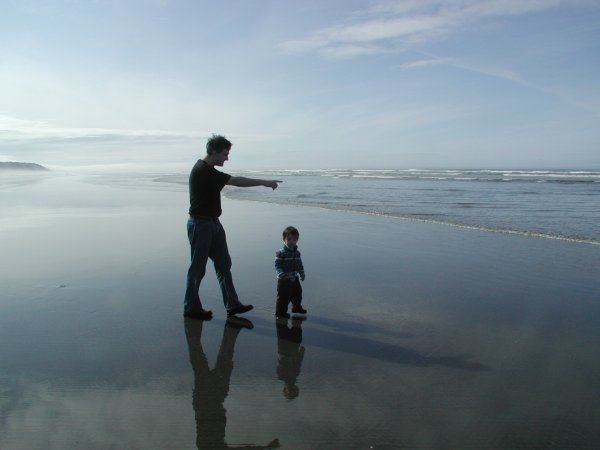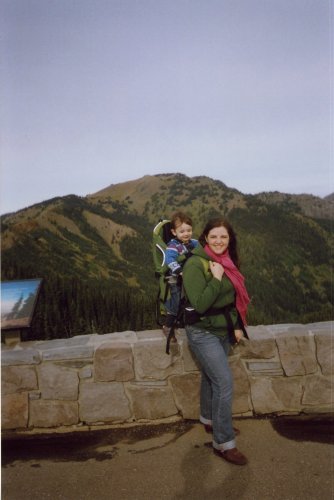I didn't pay too much attention to "surfer dude" Garrett Lisi's Exceptionally Simple Theory of Everything when the paper first appeared, but since his TED talk about it was posted last month I have found myself fascinated.
Please excuse any errors in the following - I haven't studied physics at or beyond graduate level, so my understanding may be flawed in some respects.
Here's the game. You have 8 numbers (quantum numbers) - let's call them s, t, u, v, w, x, y and z for the sake of argument. Each of these numbers can be either -1, -1/2, 0, 1/2 or 1. So there are 58 = 390625 possible sets of numbers. However, there are certain rules eliminating some combinations:
- They must be all half-integers (-1/2, 1/2) or all integers (-1, 0, 1).
- They must add up to an even number.
- If they are integers, exactly six of them must be 0.
With these rules, there are only 240 possible sets (128 with half-integers and 112 with integers).
If you take these sets as the corners of an 8-dimensional shape, you get the pretty pictures that you might have seen associated with E8 theory.
Each of the 240 possible sets corresponds to a fundamental particle in a model that includes all the standard model particles and gravity.
- 144 of the particles are quarks (up, down, strange, charm, top, bottom)×(spin up, spin down)×(red, green, blue)×(left-handed, right-handed)×(particle, antiparticle). These are the particles that make up the bulk of the mass of atoms (plus some variants).
- 24 of the particles are charged leptons (electron, muon, tau)×(spin up, spin down)×(left-handed, right-handed)×(particle, antiparticle). These are the particles that determine the shapes, textures, colours and chemistry of things (plus some variants).
- 24 of the particles are neutrinos (electron, muon, tau)×(spin up, spin down)×(left-handed, right-handed)×(particle, antiparticle). These don't have much of an effect - trillions of them pass right through your body each second.
- 6 of the particles are gluons (orange, chartreuse, azure, aquamarine, indigo, violet [1]), responsible for the "strong force" that holds atomic nuclei together.
- 2 of the particles are W bosons (particle, anti-particle). These cause the "weak force" which is the only way that neutrinos can interact with the other particles. They are quite heavy so never go very far.
- 16 of the particles are frame Higgs bosons (2 types)×(spin up, spin down)×(left-handed, right-handed)×(particle, anti-particle). Interactions with these are what gives particles their mass.
- 4 of the particles are spin connection bosons (spin up, spin down)×(left-handed, right-handed). These are responsible for gravity.
[1] These aren't the names that physicists usually use, but I prefer them.
That adds up to 220 - what about the other 20? Lisi's theory predicts some new particles which we haven't seen (because they're too heavy) but which might turn up in the Large Hadron Collider. These particles fall into two classes:
- 2 of the particles are Pati-Salam W' bosons (particle, anti-particle). These cause a force similar to the weak force but even weaker.
- 18 of the particles are coloured Higgs bosons (3 generations)×(red, green, blue)×(particle, anti-particle). These are like the other Higgs bosons except that they can also interact via the strong force.
Lisi's paper contains several tables which show the values of s, t, u, v, w, x, y and z for each of these particles.
Different combinations of the quantum numbers correspond to the conserved charges that physicists are more familiar with:
- electric charge is (3v+x+y+z)/3.
- colour charges are combinations of x, y and z.
- weak and weaker isospins are (u+v)/2 and (v-u)/2.
- weak hypercharge is (3(v-u)+2(x+y+z))/6.
- two gravitational/spin charges are (s+t)/2 and (t-s)/2.
- a charge corresponding to fermion generations (i.e. electron/muon/tau leptons, up/charm/top quarks and down/strange/bottom quarks) is w.
(Two of these are new charges predicted by E8 theory).
As well as these 240 particles, there are 8 particles with all-zero quantum numbers. The 8 neutral bosons are (I think):
- The photon (electromagnetic radiation: light, radio waves etc.)
- The Z boson (weak force)
- A seventh gluon (strong force)
- An eighth gluon (strong force)
- A fifth spin connection boson (gravity)
- A sixth spin connection boson (gravity)
- The Z' boson (weaker force)
- The w particle (generations)
As well as describing all the particles, this theory also describes their interactions. Two particles can combine to form a third (or appear as a result of the third decaying) if and only if you can add up their corresponding quantum numbers and obtain the quantum numbers of the third particle. If one of the three is a neutral boson it must be a neutral boson corresponding to a charge which is non-zero for other two particles.
If you know the quantum numbers for a particle, you can obtain the quantum numbers for the corresponding anti-particle by multiplying them all by -1. So, neutral bosons are their own anti-particles and a non-neutral particle can always interact with its own anti-particle to produce a neutral boson.
E8 theory does have some problems:
- It seems to imply a very large cosmological constant.
- Some of the higher generations of fermions have the wrong charges.
But these problems may be surmountable with more work and experimental data. Even if E8 theory is not correct in its current form, the pattern is so compelling that there is surely some nugget of truth in there somewhere that will form part of the final theory. It's not the end of physics and probably not even the beginning of the end, but it might just be the beginning of the end of the beginning.
Learning about all this stuff makes me want to create an E8 screensaver that simulates a soup of E8 particles all colliding with each other and interacting as they would at very high energies where the symmetries are unbroken. I wrote something similar many years ago when I learnt about quantum electrodynamics (a soup of electrons and photons) but this one would be much more colourful and interesting.










































































